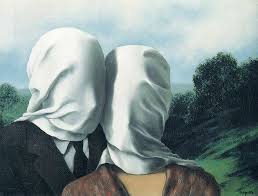
Tag Archives: abandonment
When we’re madly in love, it’s all good. Or so it seems. When we’re madly in fear, what felt like love now just feels like madness. Here are some thoughts about distinguishing the madly in love from the madly in fear.
We all have two needs: the need to be connected and the need to be separate. Behind each of these two needs is a fear. Behind the need to be connected is the fear of being over-connected or engulfed. Behind the need to be separate is the fear of being over-separated or abandoned.
When you are healthy, your relationships reflect that health. And healthy means you balance your need to connect and your need to be separate. So does your lover. Your choice of lovers mirrors all that’s wonderful about you and all that’s wounded. In keeping with this mirroring, healthy lovers mutually recognize and honor both needs for connection and for separateness. That same mirror also reflects any fears.
“Madly in love” usually becomes, “in love,” which may for some evolve into simple, healthy “love.” Healthy love has its ups and downs, but doesn’t reach the extreme swings in thoughts, feelings and actions that we’ll talk about later. In healthy love, there are real differences. And sometimes that means intense conversation. But respect for the other remains in tact and trust remains unbroken.
Healthy love feels comfortable even if the object of your affection is out having a good time without you. Healthy lovers may actually enjoy time being separate from the other. And there’s no preoccupation wondering what your lover thinks if you take time for yourself. That’s because you trust that person to take care of him or her self. And that person trusts you and what you do with your time.
So those are thoughts about healthy love and the need for separateness. The other half of the equation is how you respond to your need for connection. In healthy love, you feel safe moving toward the object of your affection, because you know, first of all, that your lover is happy to receive your connection. Secondly, you know that if one of you needs space when the other needs contact, you (as an act of love) will either accept the other’s need for connection, or will honestly express the need to be more separate. All of this is done in a spirit of respect. It’s actually pretty straight forward. No heaviness. No deep talks. And respect is a product of trust, which emerges as a central quality in healthy love. However, in unhealthy love, trust is lost in fear.
Unhealthy lovers feel just the opposite when separate from their love interest: “What’s my love doing?”; “Who’s my love with?”; “Is my love thinking about me?”; “Does my love have as much fun with me as he/she does with that other person?” These are unhealthy thoughts related to madly in fear of abandonment and these are the hallmarks: suspicion, neediness, things are never quite enough, trying too hard, over-giving, and holding on with clinched fists.
The other primitive anxiety spoken about above is madly in fear of engulfment: “I can’t breathe in this relationship anymore.”; “There’s always an issue.”; “I’m not attracted to you.”; “Grow up.” Rage, disrespect, disengagement, giving up, pushing away: these are attempts to create distance from the pursuing partner, and hallmarks of the madly in fear of engulfment.
Soon the madly in fear dance begins: one person backs away, the other pursues. The one pursuing feels hurt and the one pursued feels cornered. The passion and play and pleasure and flow of the original relationship have turned into one sand trap after another. Everything seems bogged down and weighty and flat-out scary. Of course, it takes two to tango, and eventually the one pursuing stops, leaving the pursued feeling alone, and the step flips. Dang.
If you think fondly of your love, and even long for that person, but feel comfortable by yourself and, yes, comfortable in the presence of your lover, you’re probably healthy in love. If you feel uncomfortable and anxious away from your lover; uncomfortable, judgmental or highly self-conscious around your lover, you’re probably crazy in fear.
The way out: pay attention to your own fear, not your lover’s stuff. Own that your lover is not causing your fear. It’s yours to shift. If you both take responsibility for your own fear, you might just create love.
How many of us have done the back-and-forth love dance? No, not that dance. The love dance where you fall in love, get powerfully connected, then one of you emotionally pulls back a bit, so then the other pursues a bit, then the one backing away backs away even more, and then the pursuer pursues even more…you know the rest. Usually doesn’t end pretty.
Endorsed by two New York Times bestselling authors.”

